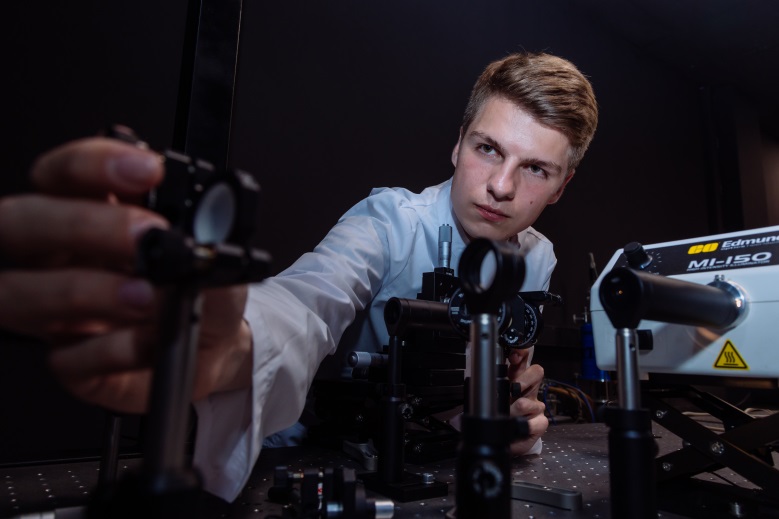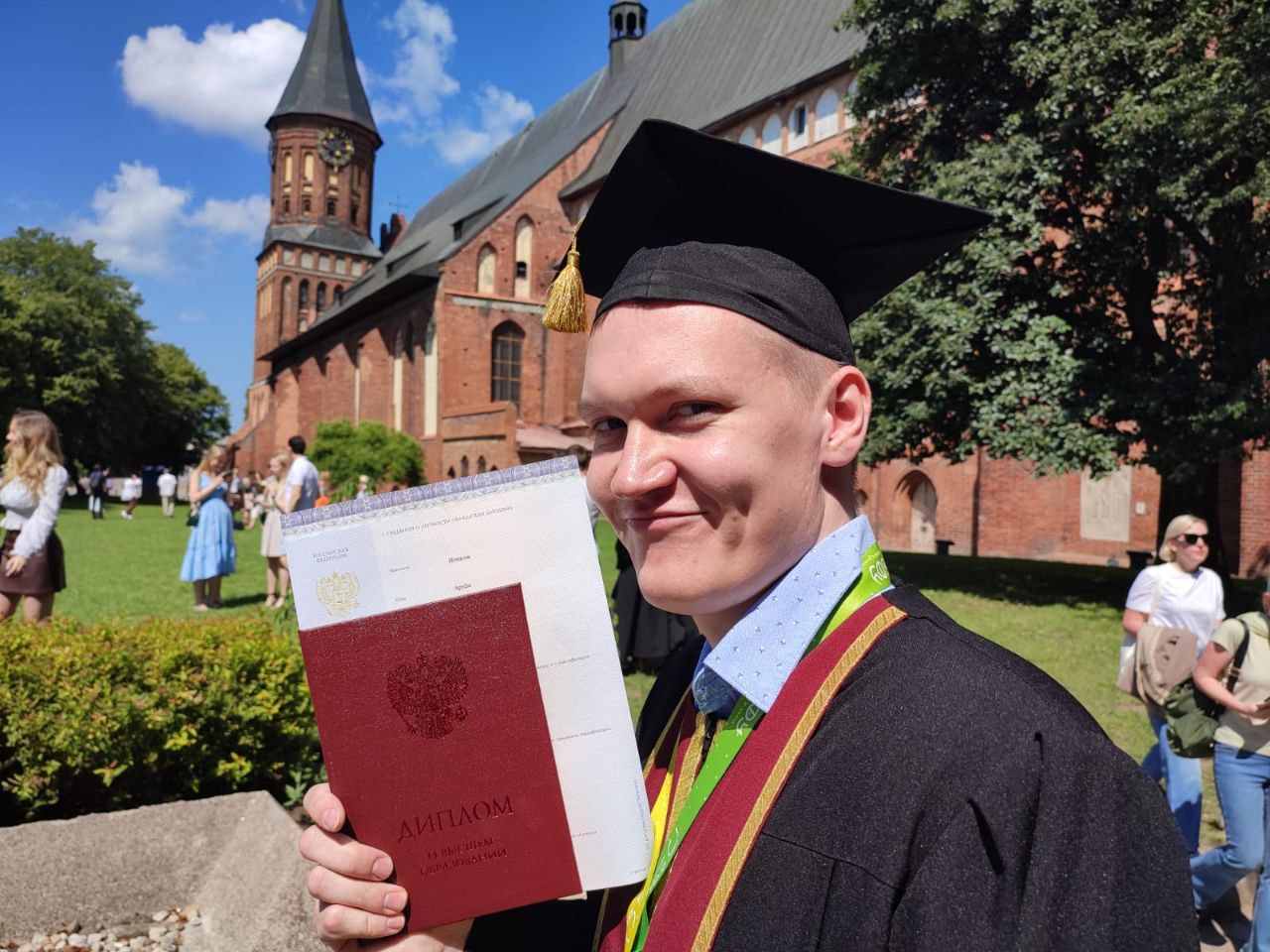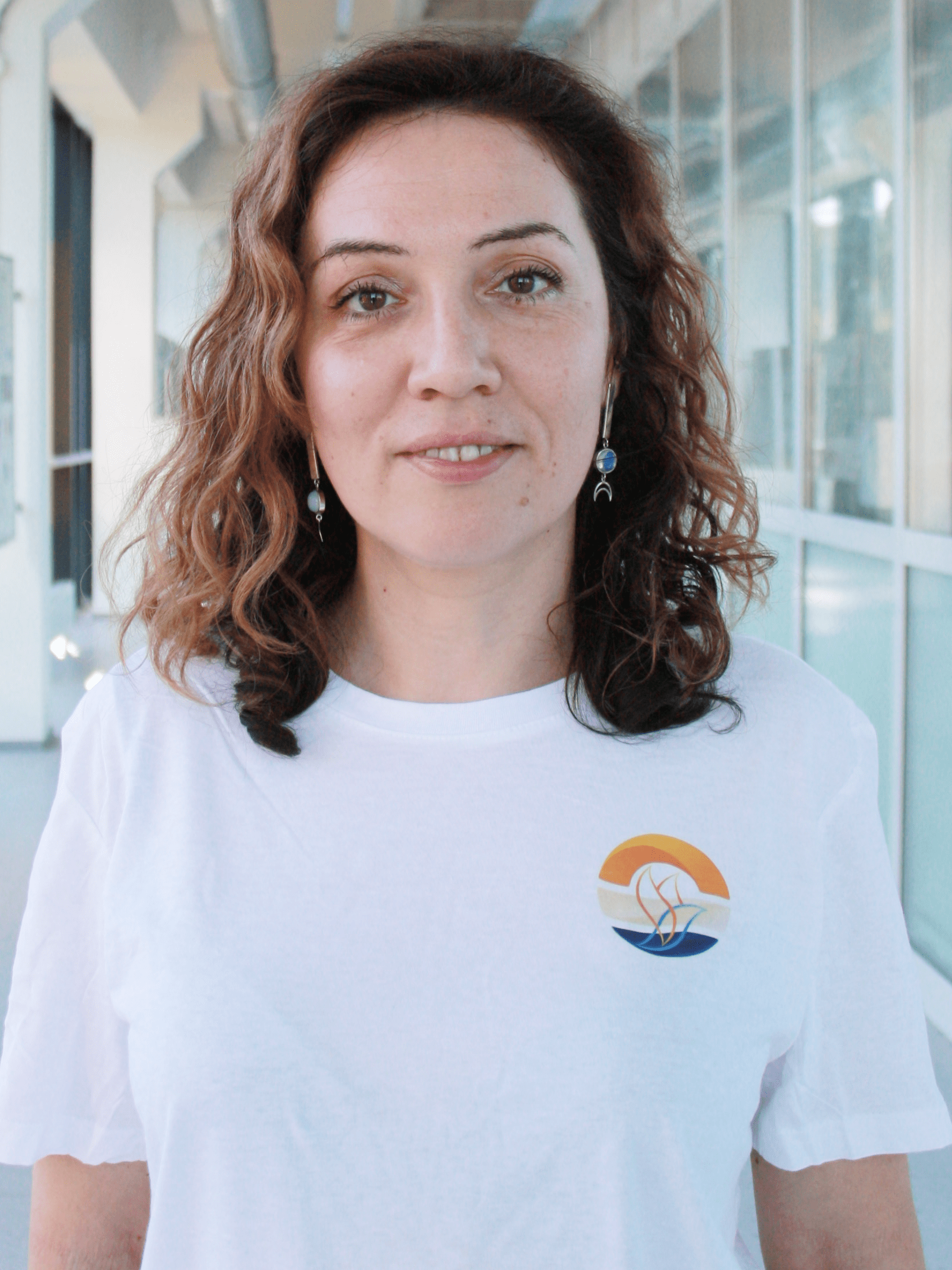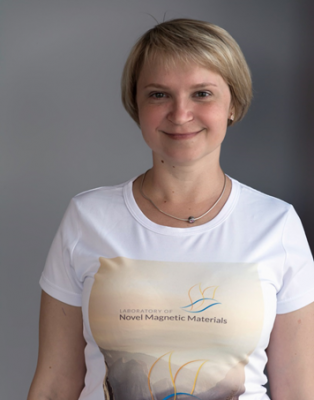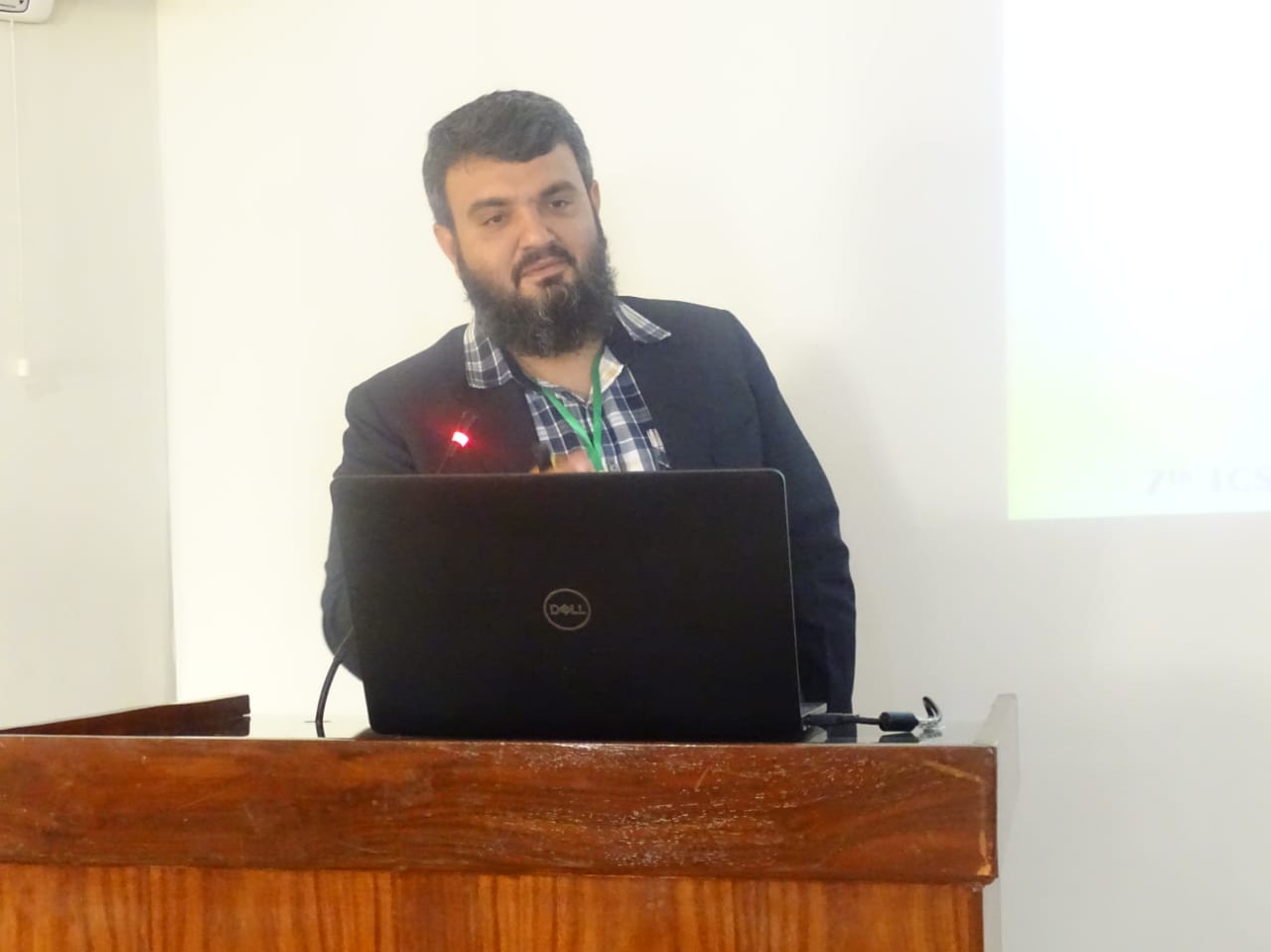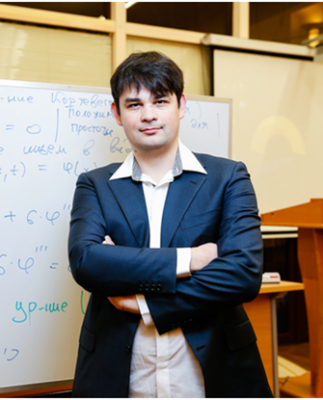Date: July 1-5, 2017
Moscow, Russia
Invited Talk:
Magnetic amorphous microwires are very sensitive to various influences (stresses, temperature and so on), which make them usable for different types of sensors [1-3]. Microwires magnetic behavior depends on contributions of the magnetoelastic energy components: i) the metallic core composition determining a sign of the magnetostriction constant, ii) the diameters of the metallic core and the total diameter of microwire with the glass shell are determining, in particular, the stresses value and radial distribution. Once the nanocrystalline phase is formed, magnetocrystalline energy should be taken into account and its influence on the magnetic characters should be considered. The microwires investigated in this work were produced from CoFe alloys by quenching and drawing technique [4] with the parameters d (the diameter of the core) from 10 μm to 25 μm and D (the total diameter) from 24 μm to 33 μm. Due to specific condition of preparation all microwires show biphase behavior: nanocrystals in an amorphous matrix [6], which was demonstrated using the XRD and DSC investigations. In a classical point of view the stress distribution in the microwire occurs from the center to the edges [5], using the electron microscopy the stresses distribution was visualized. The influence of the partial crystallization of the microwires metallic core on the magnetic characteristics in the temperature range from 300 to 1250 K was studied using the VSM. The contribution of the energy components in the formation of magnetic properties was estimated. The support is by the Ministry of Education and Science of the Russian Federation in the framework of government assignment (No.3.4168.2017/ПЧ).
[1] M. Vazquez, Handbook of Magnetism and Advanced Magnetic Materials, 4; H.Kronmuller and S. S. P. Parkin, Eds. Chichester, U.K.: Wiley, (2007) 2193.
[2] R. Hudak, R. Varga, J. Živcˇak, J. Hudak, J. Blažek, D. Praslicˇka, Theory Appl. Topics Intell. Eng. Informat., 2 (2013) 413–434.
[3] D. Praslicˇka et al., IEEE Trans. Magn., 49 (1) (2013) 128–131.
[4] A. Zhukov, J. González, M. Vázquez, V. Larin, A. Torcunov, Encyclopedia of Nanoscience and Nanotechnology, edited by H. S. Nalwa American Scientific, Stevenson Ranch, CA, Chapter 62, 6, (2004) 365–367.
[5] A. Zhukov, Adv. Funct. Mater., 16 (5) (2006) 675–680.
[6] P.Klein, R.Varga, I.Škorvбnek, R.E.Kammouni, M.Vazquez, IEEE Trans. Magn., 50(11) (2014) 2006303.
Rodionova V.1 , Baraban I.1 , Chichay K.1 , Shevyrtalov S.1 , Litvinova A.1 , Gorshenkov M.2 , Perov N.1,3
1 Immanuel Kant Baltic Federal University, Nevskogo 14, 236004 Kaliningrad, Russia
2 National University of Science and Technology MISiS, Moscow 1 19049, Russia
3 Lomonosov Moscow State University, Leninskie Gory 1-2, 119991 Moscow, Russia
Correspondence to: rodionova@lnmm.ru
Immanuel Kant Baltic Federal University,
Gaidara 6, Kaliningrad, 236022, Russia
Poster Presentations:
Studies of magnetization reversal of low dimensional structures attract increasing interest due to its connection with the development of novel spintronics [1], logic devices [2] and nano-object manipulation [3]. The amorphous magnetically soft glass-coated microwires form part of perspective magnetic materials suitable for the prospective applications related to the coding systems [4], magnetic field and stress sensors [5], and biomedicine [6]. Due to its amorphous structurethe formation of the micromagnetic structure and the dominate remagnetization mechanism are defined by the magnetoelastic energy. In our work we considered the separate and combined influence of the parameters determining the magnetization reversal of amorphous ferromagnetic microwires paying the particular attention to the domain wall dynamics. We investigated the series of Fe- and FeCoNi-based microwires. The magnetic and magnetostrictive properties were investigated for all samples using the fluxmetric and small angle rotation magnetization methods, respectively. The velocity of the domain wall was measured by the Sixtus-Tonks-like technique described elsewhere. To estimate the micromagnetic structure and the reversal magnetization features we investigated an angle dependence of the magnetic properties using the vibrating sample magnetometer and the field dependence of the perpendicular to the magnetic field component of the magnetic moment using the vibrating sample anisometer. We showed that one of the effective ways to control the magnetic properties and the domain wall dynamics is an annealing. The annealing of Fe-based microwires results in the domain wall velocity increase up to 1.6 times (2400 m/s). The annealing of FeCoNi-based microwires, which had the Sshape hysteresis loop in as-cast state, under applied stresses leads to the drastic changes of the micromagnetic structure and the magnetization reversal process – after annealing the microwires become magnetically bistable. The value of the switching field is strongly depending on the annealing conditions, and hence, can be easily manipulated. Additionally, the domain wall mobility for such microwires is much higher than for the originally bistable microwires. This makes such microwires as promising candidate for the incorporation in novel devices .
[1] S.D. Bader, S.S.P. Parkin, Annu. Rev. Condens. Matter Phys., 1 (2010) 71.
[2] D.A. Allwood, G. Xiong, C.C. Faulkner, D. Atkinson, et.al., Science, 309 (2005) 1688.
[3] M. Monticelli, et. al., Lab Chip, 16 (2016) 2882.
[4] V. Larin, et.al., Spain Patent №P9601993, (1996).
[5] V. Zhukova, M. Ipatov, A. Zhukov, Sensors, 9 (2009) 9216.
[6] A. Talaat, J. Alonso, V. Zhukova, et.al., Scientific Reports, 6 (2016) 39300.
Chichay K.1,2, Rodionova V.1,2, Zhukova V.3 , Perov N.1,4, Zhukov A.3,5
1 Science and Technology Park “Fabrika”, IKBFU, Kaliningrad, Russia
2 Center for Functionalized Magnetic Materials, IKBFU, Kaliningrad, Russia
3 Dpto. Fisica de Materiales, Fac. Quimicas, UPV/EHU, San Sebastian, Spain
4 Faculty of physics, Lomonosov Moscow State University, Moscow, Russia
5 IKERBASQUE, Basque Foundation for Science, Bilbao, Spain
Correspondence to: ks.chichay@gmail.com
Immanuel Kant Baltic Federal University,
Gaidara 6, Kaliningrad, 236022, Russia
Glass-coated ferromagnetic microwires consist of an amorphous ferromagnetic core and a glassy shell, characterized by their cylindrical symmetry and large length to diameter aspect ratio. The modification of the metallic diameter and the glass thickness leads to different properties in microwires for the same ferromagnetic alloy composition [1]. Multilayered microwires with two magnetic phases were recently introduced, where a second magnetic phase was grown by electrodeposition as an additional external shell covering fully the glass-coated microwire [2]. These multilayered magnetic systems present high potential particularly as elements in sensor devices (field, temperature or pressure sensors). In this work, a new type of multilayered microwires is introduced where the external second magnetic phase, sputtered onto the glassy coat, covers only partly the inner microwire. The particular study has been conducted on microwires consisting of a soft Fe-based core and two different soft FeNi and hard Co external shells. Core and shell were separated by an intermediate insulating Pyrex glass microtube as in case of fully covered microwires. The precursor Fe-based microwire was obtained by quenching and drawing technique [3] with a metallic core diameter of d = 10.2 µm, and total D = 26 µm. The magnetron sputtered outer shell was up to 300 nm thickness. Surfaces properties were observed by atomic force microscopy. Manufacturing defects on the glass surface of the precursor glass-coated microwire were identified, and their influence on the final magnetic properties of the microwires was analyzed. The volume magnetic properties of biphase microwire were analyzed by vibrating sample magnetometer, while the local surface hysteresis loops of each magnetic phase were determined by magneto-optical Kerr effect. Volume magnetic properties showed a behavior for bi-phase system (i.e., two-stage hysteresis loop). Local surface hysteresis loops allowed us to quantify specific values of coercive force for the soft core and the soft or hard shell. A systematic comparative analysis of the volume and local properties of the microwires has been performed in order to interpret the overall magnetic behavior and to determine the strength of magnetic interactions between the amorphous core and the sputtered shell in case of partially covered microwires.
Support is by the Ministry of Education and Science of the Russian Federation in the framework of government assignment (No.3.4168.2017/ПЧ), and the Regional Government of Madrid under NANOFRONTMAG-CM project (S2013/MIT-2850) are acknowledged.
[1] V. Rodionova, I. Baraban, K. Chichay, A. Litvinova, N. Perov, JMMM 422 (2017) 216–220.
[2] J. Torrejón, G. Badini-Confalonieri, and M. Vázquez, JAP 103 (2008) 07E712.
[3] A. Zhukov, J. González, M. Vázquez, V. Larin, and A. Torcunov, Encyclopedia of Nanoscience and Nanotechnology, edited by H. S. Nalwa American Scientific, Stevenson Ranch, CA, Chapter 62, 6 (2004) 365–367.
Baraban I.1,2, Chichay K.1,2, Berganza E.2 , Perez R.2 , Rodionova V.1,2, Vazquez M.2
1 Laboratory of Noval Magnetic Materials, Immanuel Kant Baltic Federal University, 236041, Kaliningrad, Russia
2 Center for Functionalized Magnetic Materials (FunMagMa), Immanuel Kant Baltic Federal University, 236041, Kaliningrad, Russia
3 Institute of Materials Science of Madrid, CSIC. 28049 Madrid, Spain
Correspondence to: machay@lnmm.ru
Immanuel Kant Baltic Federal University,
Gaidara 6, Kaliningrad, Russia
The exchange bias effect is a shifting of hysteresis loop along the field axis. It can be observed below the Neel temperature in a system, which consists of ferromagnetic and antiferromagnetic materials [1]. This phenomenon is very useful for applications of spintronics, magnetic recording, memory devises and others. The shape of hysteresis loop and separation quality of top and bottom hysteresis loops of two- and trilayered systems is important parameters additional to the value of exchange bias itself. This work is dedicated to investigations of the exchange bias in two- and trilayered thin films structures consist of Ni40Fe60 and Ir50Mn50 layers. The main idea is to follow properties of samples located at different configuration and strength of external magnetic field applied during the deposition of thin films. The experimental technique is following: samples of mentioned above thin films structures with antiferromagnetic layer thicknesses of 2, 4, 6, 8 nm have been prepared by magnetron sputtering method in presence of external magnetic field, created by two neodymium permanent magnets plates, which were put opposite and parallel to each other. The magnetic field was mapped in each sector of 5×5 mm2 in the space between the plates where we placed the substrate. After deposition, we cut the sample into square pieces each of 25 mm2 for investigating them by vibrating sample magnetometry. In addition, using COMSOL Multiphysics, calculated the magnetic field configuration created by permanent magnets during deposition. The advantage of our technique is simultaneous preparation of several samples deposited under different external magnetic field and study its influence on the hysteresis loop. In this sense, our technique can be regarded as so called “combinatorial” approach in modern materials science [2]. In the report, we discuss influence of external magnetic field configuration on exchange bias, coercivity, and hysteresis loop shape. The exchange bias and coercivity dependences on the IrMn layer thickness are presented, as well.
[1] Meiklejohn W. H., Bean C. P., Phys. Rev., 102 (1956) 1413–1414.
[2] Green, Takeuchi, and Hattrick-Simpers, J. Appl. Phys., 113 (2013) 231101.
Gritsenko Ch.1,2, Rodionova V.1,2, Babaytsev G.3 , Dzhun I. 3, Chechenin N.3
1 Center for Functionalized Magnetic Materials, Immanuel Kant Baltic Federal University, 236004, Nevskogo 14, Kaliningrad, Russia
2 Laboratory of novel magnetic materials, STP “Fabrika”, Immanuel Kant Baltic Federal University, 236000, Gaidara 6, Kaliningrad, Russia
3 Skobeltsyn Institute of Nuclear Physics, Lomonosov Moscow State University, Leninskie gory 1/2, 119991 Moscow, Russia
Correspondence to: christina.byrka@gmail.com
Laboratory of Novel Magnetic Materials, STP “Fabrika”, IKBFU,
Gaidara, 6, Kaliningrad, Russia, 236022
Magnetic nanoparticles (MNPs) are studied approximately since the 1950s years and currently are a hot topic in the modern material science, because of their unique physical and chemical properties which make them attractive for many applications, from biomedicine to catalysis, to sensors, etc. Generally, for their application MNPs must be dissolved in a fluid and different strategies can be applied to prepare stable suspension of MNPs: electric double layer, surface modification by organic coating, variety of liquid media [1]. Magnetic characterization of MNPs dispersed in fluids by conventional methods is not trivial, due to the difficulties in handling and installing liquid samples into laboratory instruments. Sample holders in conventional vibrating sample magnetometer (VSM) and superconducting quantum interference device (SQUID) magnetometer are suited for measurements of solid samples in form of thin film or powders, but not enough optimized for installing liquid samples. Moreover, depending on the freezing point of the solvent in which the nanoparticles are dispersed, specific protocols for temperature dependence measurements are needed, due to the different magnetic behavior that the MNPs may show when they are blocked or free to move in a fluid. The additional artifact in measuring of magnetic properties of MNPs occurs due redistribution of a liquid sample in holder, that can lead to center change, and chains or aggregates formations [2]. In this work, a series of procedures for the preparation of liquid samples for SQUID measurements will be presented. In particular, plastic capsules of ferrofluids of magnetite nanoparticles dispersed in a water solution are prepared and tested in different temperature environments in order to check their stability after the thermal stress. Then, the basic magnetic characterization of their magnetic properties in terms of Zero Field Cooling (ZFC) – Field Cooling (FC), and low temperature Isothermal Remanent Magnetization (IRM) and Direct Current Demagnetization (DCD) are carried out with the aim of elucidating the interactions between MNPs, which is expected to be strongly dependent on the solution pH, as previously elucidated by hydrodynamic radius and zeta-potential measurements [3].
[1] A.H. Lu, E.L. Salabas, F. Schüth, Angew. Chemie – Int. Ed., 46 (2007) 1222.
[2] Z. Boekelheide, C.L. Dennis, AIP Adv., 6 (2016).
[3] E. Illés, E. Tombácz, J. Colloid Interface Sci., 295 (2006) 115.
Omelyanchik A.1,2, Laureti S.3 , Varvaro G.3 , Rodionova V.1,2, Kusigerski V.4 , Knezevic N.4 , Peddis D.3 , Illés E.4
1 Immanuel Kant Baltic Federal University, Kaliningrad, Russian Federation
2 Center for Functionalized Magnetic Materials, IKBFU, Kaliningrad, Russian Federation
3 Istituto di Struttura della Materia – CNR, Monterotondo Stazione (Roma), Italy
4 Dept. of Theoretical and Condensed Matter Physics, Vinča Institute of Nuclear Sciences, Belgrade, Serbia
Correspondence to: 9azazel@gmail.com
Immanuel Kant Baltic Federal University,
Nevskogo 14a, Kaliningrad, 236004, Russia.
Magnetic shape memory alloys (MSMA) based on off-stoichiometric Ni2MnGa Heusler alloy show a first-order reversible martensitic transformation (MT) from the high temperature cubic L21 phase (austenite) to a low temperature phase (martensite) with lower symmetry [1], which can be induced by single or multiple effect of heating, stress or magnetic field. Here we report an experimental study of Ni-Mn-Ga Heusler alloy film with Ni- and Ga-excess on polycrystalline alumina substrate in comparison with freestanding film (FS). Both obtained films had 2-μm thickness and martensitic phase transition above the room temperature that is not typical for such composition (Fig. 1a, b). The martensitic phase transition region was found to be wider in the freestanding film. Both the films demonstrate isotropic behavior of magnetic properties for inplane direction of magnetic field that is related to the presence of (202) fiber texture. Magnetically induced reorientation of variants (MIR) was observed in freestanding film at magnetic field of 0.73 kOe (Fig. 1c). In case of substrate-constrained film MIR process does not occur. Only widening in magnetization loops due to the internal compressive stresses was observed. For the freestanding film, easy magnetization axis orients normally to the film plane, while for the substrate-constrained film it has preferred easy magnetization plane. Both films demonstrate a maze-like surface magnetic domain structure with domain width of about 0.9 μm. The differences between the substrate-constrained and the freestanding films were described in terms of compressive stress influence and film growth modes.
Figure 1. a) XRD pattern made at room temperature. Phase-temperature dependence is shown in the inset; b) Normalized temperature-dependent magnetization curves with applied magnetic field of 0.1 kOe and electrical resistance curves; c) Small field range part of normalized magnetization loops measured in-plane. The inset shows in-plane magnetization loops in field of ±10 kOe
[1] S. Kaufmann, U.K. Rößler, O. Heczko, M. Wuttig, J. Buschbeck, L. Schultz, S. Fähler, Physical Review Letters, 104 (2010)145702.
Shevyrtalov S.1, Miki H.2, Ohtsuka M.3, Mashirov A.4, Grunin A.1, Lyatun I.1, Seredina M.5, Khovaylo V.5, Rodionova V.1
1 STP “Fabrika” & FunMagMa, Immanuel Kant Baltic Federal University, Kaliningrad, Russia
2 FRIS, Tohoku University, Sendai, Japan
3 IMRAM, Tohoku University, Sendai, Japan
4 Kotelnikov IRE RAS, Moscow, Russia
5 National University of Science and Technology MISiS, Moscow, Russia
Correspondence to: shevyrtalov@gmail.com
Immanuel Kant Baltic Federal University,
Gaidara 6, Kaliningrad, 236022, Russia
One of the modern hot topics nowadays is using magnetic sensors in medicine applications like magnetic cardiography and tomography which requires precision measurements of magnetic field with magnitude of 10 nT for characterizing the stray fields of biological objects. The most reliable techniques which are based on superconductivity, induction or Hall effects have several restrictions connected with decreasing of sensitivity at small volumes and necessity of moving the sensor element for changing the probe position. Alternative variant which allows to avoid these restrictions is using of magneto-optical (MO) effect in reflection geometry. The sensitivity of sensors based on MO effects in reflection geometry is not enough for measuring low magnitudes but it can be increased by excitation of surface plasmon-polaritons (SPPs) on metal-dielectric interface which leads to appearance of resonant MO effects which increase the polarization plane rotation or changing the intensity of reflected light due to maximization of adsorption of light in media [1]. Thereby MO effects can be enhanced by excitation of SPPs in magnetoplasmonic crystals (MPlCs) – multilayer structures fabricated of noble and ferromagnetic layers on substrate with 1D diffraction grating which allow designing local and high sensitive AC and DC magnetic field sensor [2]. MPlCs were fabricated by ion-beam deposition of metals and dielectrics on a polymer substrate made of commercial digital discs with 1D spatial profile. Fabricated MPlCs was attested by atomic force microscopy and stylus profilometry techniques. Magnetic properties of fabricated samples were investigated by vibration sample magnetometer. Optical and MO properties were studied by spectroscopy of reflectivity coefficient technique. The sensor structure unites the principles of magnetomodulation technique with a possibility of using optical radiation spot as a probe. Using the MPlCs allow to enhance transverse magneto-optical Kerr effect by excitation of SSPs. This approach provides high sensitivity at very small volume of media defined by diffraction limit and penetration depth of optical radiation into MPlC. Experimentally measured sensitivity equals 10-5 Oe at a spot size of 2 mm2 .
Fig.1. a) principal scheme of sensor setup, where 1 is a light source, 2 – polarizer, 3 – chopper, 4 – PMT, HAC is a modulating field and HDC component is measurable field and b) dependence of MO signal and magnetization curve on magnitude of applied AC and DC fields.
[1] A Grunin, A. Fedyanin, et. al., Journal of Applied Physics, (2013) 11317A9462013.
[2] M.Moradi, J. Akerman, et. al., Electron. Mater. Lett., 11(3) (2015) 440-446.
Belyaev V.1 , Grunin A.2 , Rodionova V.1 , Fedyanin A.2
1 STP “Fabrika” & FunMagMa, Immanuel Kant Baltic Federal University, Kaliningrad, Russia
2 Lomonosov Moscow State University, Moscow, Russia
Correspondence to: belyaev@lnmm.ru
Immanuel Kant Baltic Federal University,
Gaidara 6, Kaliningrad, 236022, Russia
Nowadays magnetic nanoparticles have applications in many different areas such as storage system, catalysis, biomedicine etc. [1]. There are many methods to synth nanoparticles such as coprecipitation, thermal decomposition, solvothermal routs, chemical vapor deposition, arc discharge etc. and all of them fit different applications. One of synthesis method of nanoparticles is laser ablation. Laser ablation is a complex physical and chemical processes – a removal (ablation) of the substance from the surface or volume of the solid target using a laser beam (Fig. 1).
Fig.1 Principal scheme of synthesizing nanoparticles by laser ablation in liquids.
In contrast to the chemical ways of synthesis, nanoparticles prepared by laser ablation consist only from the material of target and the liquid (without impurities). Unlike the laser ablation in a vacuum or in a gas, in laser ablation in liquid it is much easier to collect them because nanoparticles remain in the colloid formed instead of being absorbed on the substrate or chamber walls. In this work, we prepared the magnetic nanoparticles by laser ablation of a α-Fe target in an aqueous medium and in the isopropyl alcohol solution, using two different types of lasers (femtosecond and nanosecond) and power of laser beam (15uJ for ns-laser; 25uJ, 60uJ and 250uJ for fs-laser). Magnetic measurements carried out by vibrating sample magnetometer 7404 System by LakeShore. For analysis of the magnetic properties, the hysteresis loops of each sample at room temperature, the low temperature dependence of magnetization in zero-field cooled and field cooled (ZFC/FC) measurements, and the angle dependence of the magnetization at room temperature and field of 11 kOe were measured. The coercive force of the obtained samples is about 400 Oe, which is greater than value for the bulk material. This indicates, that the synthesized nanoparticles are near a single-domain regime [2]. Peak-like behavior of ZFC magnetization and bifurcation of ZFC and FC curves indicate at the partial existence of superparamagnetic particles around room temperature and broad size distribution. In conclusion, enchanted coercivity, high value of saturation magnetization and small size of synthesized particles are interest for wide range of applications.
[1] J. Xiao, P. Liu, C.X. Wang, G.W. Yang, Progress in Materials Science (2017).
[2] S.P. Gubin, Y.A. Koksharov, G.B. Khomutov, G.Y. Yurkov, Russ. Chem. Rev., 74 (2005) 489.
Nosan M.M.1,2, Omelyanchik A.S.1,2, Samusev I.G.1 , Myslitskaya N.M.1 , Borkunov R.Y.1 , Rodionova V.V.1,2
1 Immanuel Kant Baltic Federal University, Kaliningrad, Russia
2 Center for Functionalized Magnetic Materials, Immanuel Kant Baltic Federal University, Kaliningrad, Russia
Correspondence to: nosanmark@gmail.com
Immanuel Kant Baltic Federal University,
Gaidara 6, Kaliningrad, 236022, Russia
In recent years the magnetic compounds with significant magnetocaloric effect (MCE) near room temperature are intensively studied. On the basis of these studies the possibility of ecological, economically viable solid- state refrigerators is proposed [1]. Recently, among the promising materials for magnetic refrigeration, a considerable interest is attracted to the FeRh alloys in which a giant MCE is found [2, 3]. Fe48Rh52 exhibits a giant negative magnetocaloric effect (MCE) near room temperature, arising from an unusual first-order transition near 320 K between antiferromagnetic (AFM) and ferromagnetic (FM) order, which is accompanied by a unit cell volume expansion. However, the broad hysteresis often associated with the transition, are key drawbacks for applications. The former results in a dramatic degradation of MCE versus refrigeration cycles is observed by recent direct measurements. The irreversibility of the MCE is associated with very broad or incomplete transitions. While the irreversibility and hysteresis losses in other caloric materials with first-order magnetic transitions have been reduced by doping, or introducing porosity, such reductions have remained elusive in the case of FeRh. In paper [4] it is present the results of multicaloric study of layered composite heterostructure and use it to solve a problem, that is, a large hysteresis that impeded reversibility in an otherwise promising magnetocaloric material [4]. For this reason, the simple bilayer multiferroic composite with piezoelectric and magnetostrictive components were prepared. Our sandwich consists of magnetic component of FeRh alloy with formula Fe48Rh52 and piezoelectric PbZr0.53Ti0.47O3 (PZT) sample with thickness about 0.2 mm of each. The magnetic, magnetocaloric and magnetoelectric properties of FeRh-PZT composite were performed in room temperature. M(H) loops were performed using VSM magnetometer. MCE was measured from direct method, ME effect was studied by measuring a voltage U generating across a sample under both alternating and bias magnetic fields. Anomaly of ME coefficient near temperature of AFM-FM transition was observed and associated with anomaly of magnetostriction of FeRh component near transition point. The MCE and magnetic measurements in FeRh-PZT composite were performed in two regimes: with switching of voltage across the thickness of the sample and when the voltage was switch off. In «switch off» regime the MCE and M(H) loops demonstrate the typical for FeRh alloys behavior. The voltage switching leads to the change of quantity of MCE ΔT and shifting of AFM-FM transition point. M(H) loops also demonstrate the changes in switch on regime and depends from quantity of applying voltage. These results may be used for magnetocaloric control and frozen of the irreversibility of MCE effect in caloric materials.
[1]. M. Tishin and Y. I. Spichkin. 2003, The Magnetocaloric Effect and its Applications, Inst. of Physics, New York.
[2]. V. Rodionov, V. Rodionova, M. Annaorazov, Acta Physica Polonica A, 127, 2 (2015) 445.
[3]. S.A. Nikitin, G. Myalikgulyev, A.M. Tishin, M.P. Annaorazov, K.A. Asatryan and A.L. Tyurin, Physics Letters A 148 (1990) 363.
[4]. Y.Liu, L.C.Phillips, R.Mattana, M.Bibes, A.Barthe´le´my, B.Dkhil, Nature Communication 7 (2016) 1146.
Amirov A.A.1 , Rodionov V.V.2 , Rodionova V.V.2 , Aliev A.A.1
1 Institute of Physics, Dagestan Scientific Center of Russian Academy of Sciences, Makhachkala,Russia
2 Immanuel Kant Baltic Federal University, Science and technology park “Fabrica”, Kaliningrad, Russia
Correspondence to: amiroff_a@mail.ru
Institute of Physics of the Dagestan Scientific Center of RAS
94 Yaragskogo str., Makhachkala, 367003 Russia

















